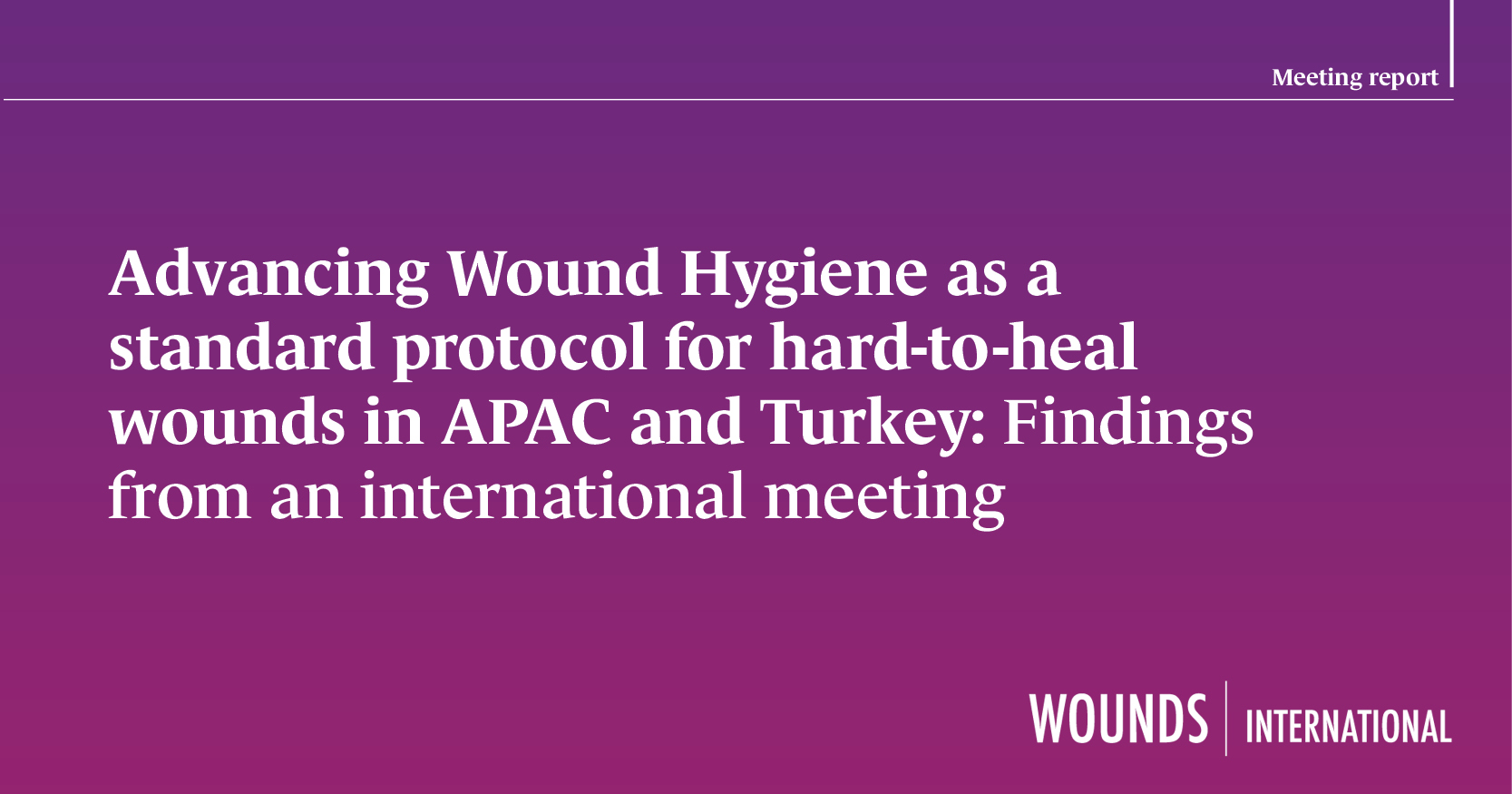Chronic wound care is frequently delivered by generalists — such as community nurses, general practitioners (GPs), aged care staff and allied health professionals — who manage diverse caseloads across primary care, aged care, and community health settings (Ahmajärvi et al., 2024; Monaro, 2021). Despite their central role, these providers may face significant barriers to delivering effective wound care.
Formal education is typically limited, even for basic wound care and management (Gould & Herman, 2025). Nurses lack adequate training in wound care clinical skills, with research suggesting a need for more specialised training in undergraduate and postgraduate nursing practice (Fernández-Araque et al., 2024). GPs may also be constrained by inadequate training, fragmented care pathways, and poor coordination with other services (Ahmajärvi et al., 2024). In recent years, some general practices in the UK have withdrawn or limited their provision of wound care services due financial pressures and increased demand on nursing.
This is set against the backdrop of a growing global wound care burden. In the UK alone, chronic wounds affect an estimated 1.5–2 million people, with annual treatment costs exceeding £5 billion (Guest et al, 2020). Globally, prevalence is rising due to ageing populations and increasing rates of diabetes and vascular disease (Frykberg and Banks, 2015; Sen, 2019). A recent Finnish cohort study identified that diagnostic delays beyond 42 days significantly prolonged healing trajectories and were associated with higher healthcare resource use (Ahmajärvi et al, 2025).
Why knowledge alone is not enough
Recent behavioural trials in Australia suggest that embedding micro-interventions such as “point-of-care nudges” in EMR systems can meaningfully reduce clinical inertia in wound management decisions. These interventions produced a 27% improvement in timely escalation over 6 months (Varela et al., 2025). Indeed, fear of making clinical errors, one of the primary influences on patient safety, can make clinicians more likely to stick with familiar practices, even when those practices are outdated or suboptimal. This fear is associated with guilt, shame, anxiety and depression amongst healthcare providers, extending beyond patient harm to include concerns about reputation and job security (Boyer et al., 2024).
In fact, research directly demonstrates that knowledge does not consistently translate into behaviour change. For example, a study of family medicine clinicians found varying degrees of this knowledge-behaviour gap even after educational interventions. This same study identified that only two conditions reliably promote clinical action based on knowledge: “level of certainty and sense of urgency” (Kennedy et al, 2004). Without these conditions, even well-informed clinicians may default to established routines, regardless of their knowledge base.
It is clear the knowledge-practice gap is not simply an educational problem, but a complex interplay of psychological, emotional and systemic factors that must be addressed through behavioural and organisational interventions, not just information dissemination. To support generalists to deliver better chronic wound care, practical, behaviourally informed tools and support are needed to make evidence-based action the default choice, not the exception.
Bridging the gap: Best practice statement for empowering generalists
Improving generalist performance in wound care does not require transformation into specialists. Instead, it requires creating conditions in which they can take timely, confident and appropriate action using simplified tools and clear pathways. The following best practice principles can help close the knowledge-practice gap:
1. Focus on essential knowledge, not exhaustive education
Deep, specialist-level knowledge is not the goal; actionable awareness is. Generalists need to be able to reliably recognise key wound types, identify red flags and know the first steps to take.
Essential knowledge for generalists includes:
- Recognition of wound types: such as diabetic foot ulcers, venous leg ulcers, and pressure injuries.
- Understanding of red flag indicators: including wounds that fail to improve by 30–40% within four weeks (venous leg ulcers or pressure ulcers), increasing exudate, odour, or signs of infection (Wounds UK, 2022).
- Basic first-line interventions: including appropriate dressing categories and indications for compression therapy or offloading.
2. Simplify decision-making with embedded tools
To be effective, clinical tools must be accessible, easy to use and embedded into everyday workflows. Rather than relying on memory or individual initiative, the system itself should prompt best practice.
Useful tools might include:
- Wound assessment flowcharts: visual aids that support initial wound classification and treatment planning.
- Dressing selection guides: providing stepwise recommendations based on wound characteristics.
- Digital decision trees or apps: integrated into electronic medical records or mobile platforms, offering real-time support at the point of care.
3. Enable confident escalation and referral
Timely escalation is one of the most critical elements of effective wound care, yet generalists may hesitate to escalate due to fear of overreacting, uncertainty about criteria, or lack of access to specialist teams. Establishing clear escalation frameworks with defined clinical criteria and communication pathways can support confident, appropriate decision-making and improve patient outcomes.
A clear escalation framework should include:
- Defined clinical criteria: such as stagnant healing, suspected infection, or signs of arterial compromise.
- Structured referral pathways: including digital referral forms, predefined triage timelines, and clear contact points.
- Cultural reinforcement: messaging that escalation reflects good practice, not clinician failure.
4. Engage specialists within seven days of entry to care
Early intervention is associated with faster healing, fewer amputations, and lower overall treatment costs (Sen, 2019; Frykberg & Banks, 2015). Setting a clear, system-wide benchmark—such as a seven-day target for specialist input—helps align teams and resources around early escalation.
The goal is to:
- Minimise diagnostic delays, which currently average 57 days, and associated complications or deterioration of wounds, which may require hospitalisation or advanced interventions. (Guest et al., 2020).
- Support generalist teams with timely feedback and specialist input.
From best practice to clinical practice
Closing the gap between best practice guidance and real-world clinical practice requires more than distributing knowledge:
- Structured onboarding is a critical starting point. As staff rotate across services or enter new roles, they should be introduced early to the key elements of effective wound care, to ensure consistency from the outset: red flag criteria, escalation triggers and simplified decision aids.
- Digital solutions are another opportunity to support frontline decision-making. Prompts built into electronic medical records—such as reassessment alerts or escalation reminders when healing lags—could guide timely action without adding to cognitive load.
- At the team level, monitoring local data on escalation rates, response times, or healing outcomes provides valuable feedback for staff members. Dashboards that allow visualisation of this information can give real time feedback to teams and team members, highlighting areas of strength, signalling where further support is needed and keeping teams aligned on priorities.
- Finally, creating a culture that recognises good practice—whether through informal peer shout-outs or more structured feedback loops—can help to shift behaviour. Sharing short, local examples of positive outcomes following timely escalation or early intervention can help to build confidence and reinforce the message that proactive care leads to better results.
These changes are not about increasing workload. They are about designing environments that support the right actions, every time, by every clinician, so that evidence-based care becomes not only possible, but routine.





